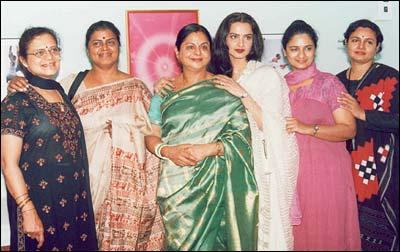A belated honour for writer Jayakanthan
A belated honour for writer Jayakanthan
The writer believed that in the lives of rickshaw drivers, prostitutes, pickpockets and rag pickers there is a flaming passion, a liveliness and truth.
There is a touch of irony in the selection of maverick Tamil writer D Jayakanthan for the Jnanpith award for 2002 for his “outstanding contribution to the shaping of Indian literature through his authentic and vivid portrayal of Indian reality.” For Mr Jayakanthan (71), who has written over 40 novels, nearly 200 short stories and 15 collection of essays, the honour has come rather late in the day, 20 years after he stopped writing.
Jayakanthan is the second Tamil writer to receive the nation’s highest literary award, the first being Akilan. While Akilan, who got the award way back in 1975, was an epitome of Tamil orthodoxy, Jayakanthan is its very antithesis, for he shot into fame by writing about the slum culture in Chennai in a way that shocked middle class values.
Though Jayakanthan’s maiden short story was probably Vazhkai Azhaikkirathu (Life is calling-1957) and Kaivilangu (Handcuff-1961), it was Yarukkaka Azhuthan (For whom did he cry - 1962) and Unnaipol Oruvan (Someone like you -1962) which brought him to limelight. Written in earthy prose, they highlighted the life of the downtrodden in Chennai slums. His writings had an authentic touch, for he lived among the slum dwllers in his early years of struggle when he worked as a compositor in a printing press.
Early life
Born in 1934 in a family of agriculturists in Cuddalore, Jayakanthan dropped out of school after the fifth grade. He ran away from home at the age of 12, unable to bear the harsh treatment meted out to him. Later, his uncle looked after him and it was from him that Jayakanthan imbibed the Communist ideology. He then married a Dalit woman and lived in the slums.
The 1960s could be called the `Jayakanthan era’ when he wrote a series of short stories in Ananda Vikatan, a family magazine. Some of his stories, outrageously ahead of times, found a place in this magazine. For example, Agni Parikshai (Ordeal by fire). It is the story of a Brahmin mother, shocked by the rape of her teenage daughter by a stranger. She nevertheless tells her to forget it like a bad dream, and get on with life. The story ends with the mother giving the traumatised daughter an oil bath, a symbolic gesture of purification.
It shocked the middle class conscience, but emboldened Jayakanthan to expand it into a full-length novel, Sila Nerangalil Sila Manithargal (Certain people at certain times). Later, based on this story, a movie was made and it won critical acclaim.
Some of his other literally acclaimed works are Oru Nadigai Nadagam Parkiral (An actress is watching a drama) This also served as a base for another movie. Parisukku Po (Go to Paris), was about cross-cultural pulls written in the early 1970s.
Though Jayakanthan has moved away from the centre stage, he still remains an iconoclast who ridicules social anomalies, a ridicule bordering on cynicism. Typical is his reaction to the honour conferred on him, he told All India Radio, “It is a reflection of how Hindiwallahs look upon people speaking other languages.”


